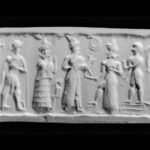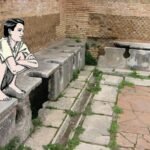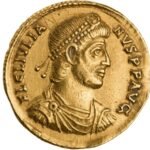The recent annexation of the Crimea by the Russian Federation should remind us of the competing and complicated claims of legitimacy over this tiny black sea territory, in this case between Ukraine and Russia. However, it would be a mistake to analyze Russia’s territorial ambitions as an isolated action, indeed quite the opposite. The Crimean peninsula has long been a contested region between various empires and nations.
During the 17th century, the steppes of Ukraine were subject to a prolonged series of wars between the great powers of Eastern Europe, namely the Ottoman Empire, the Polish Lithuanian Commonwealth (PLC) and Russia. During this period the Khanate of Crimea, one of the successor states of the Golden Horde and a vassal of the Ottoman Empire, played a critical role in aiding the Ottoman`s military campaigns against first the PLC, and later against the growing power of Russia.
Recommended Reading
Athens vs. Sparta: The History of the Peloponnesian War
The Battle of Thermopylae: 300 Spartans vs the World
Ancient Sparta: The History of the Spartans
Though Ottoman and Tatar military power was ultimately broken decisively during the disastrous War of the Holy League (1684-1699), and Russia’s dominance over Ukraine was assured, the result was never a certainty. Throughout most of the 17th century, the Crimean Khanate possessed the potential, and indeed the will, to dominate the Dnieper and Volga plains.
The origins of the Crimean Khanate can be traced roughly to the year 1443, when Haci Giray, one of the unsuccessful contenders for the throne of the Golden Horde, succeeded in establishing an independent authority over the Crimea and the adjacent steppe.[1]
Following the Ottoman capture of Constantinople in 1453, Haci Giray moved quickly to establish a military alliance with the Ottoman Sultan Mehemed II, who he saw as a potential partner in his wars against the Golden Horde.[2] Indeed, the first instance of Tatars and Ottoman military cooperation occurred only a year later in 1454, when Giray Khan sent 7000 troops to assist in Mehemed IIs siege of the Genoese colony of Kaffa, situated on the southern Crimean coast.[3]Though ultimately unsuccessful, the expedition set a precedent for future Ottoman-Tatar cooperation.
The Crimean Khanate’s independence was not to last long, however, as it was quickly incorporated into the Ottoman political orbit. After the death of Giray Khan in 1466, his two sons plunged the Khanate into intermittent civil war for control of their father’s throne. In 1475, Mehemed II seized the opportunity provided by the crisis over the Khanates succession to impose his influence over the Crimea, and by 1478 he was able to place a loyal candidate, Mengli Giray, on the throne.[4]The new Tatar Khan agreed to become an Ottoman vassal, stating in a treaty to be “the enemy of your enemy and the friend of your friend.”[5]
The Tatar alliance with the Ottomans was to prove remarkably enduring, and was to be a fixture of Eastern European politics until its “independence” was secured by Russia in 1774 by the Treaty of Kuchuk-Kainardji.[6] One reason for the durability of this alliance system was the mutually beneficial value of the relationship for both parties.
For the Ottomans, the Crimean Khanate was particularly helpful in securing the northern frontier of their empire, as well as being a reliable source for skilled cavalry (usually around 20,000) to supplement the Ottoman army on campaign.[7] As the first line of defense against threats to Ottoman ports in Crimea, as well as their dependencies in Wallachia and Transylvania, the Tatars were highly useful as their ability to conduct quick raids into enemy territory could usually be relied upon to slow an enemy army’s advance.[8]
For the Khanate, the Ottoman alignment was necessary to destroy the power of the Golden Horde, who until the late 15th century still posed a formidable military threat. Subsequently, the Ottomans offered protection to the Khanate against the encroachments of the PLC, and subsequently the Russian Empire.
That the Crimean Khanate possessed a formidable military organization is clear by the privileged position afforded to them by the Ottoman’s, yet it remains uncertain exactly how large the Tatar army was. This is important when one wishes to consider what the Tatar army’s military potential could have been, and what they might have been able to achieve if properly supported by the Ottomans.
Latest Ancient History Articles
Incan Gods and Goddesses: 14 Ancient Deities of the Inca Pantheon
Mesopotamian Gods and Goddesses: 34 Deities of the Tigris and Euphrates Rivers
Ancient Gods and Goddesses from Cultures Around the World
Alan Fisher, for example, conservatively estimates Tatar military strength at around 40,000-50,000.[9] Other sources place the number around 80,000, or even upwards to 200,000, though this latter figure is almost certainly an exaggeration.[10]
The apogee of the Tatar army was in the early 16th century, with its most notable success being its victory over, and resulting destruction, of the Golden Horde in 1502.[11] Yet the fruits of this victory went not to the Khanate, but to Russia. As the borders of Russia steadily advanced towards the Tatar frontier, the Crimean Khanate increasingly viewed Russia as their principle rival, and recognized it’s dangerous military potential long before the Ottoman Empire.[12]
The Ottomans, for their part, showed a remarkable degree of indifference to the expansion of Russia during the 16th century, preferring it to a corresponding increase in the Tatar’s political power, which would only weaken their influence over the Khanate. Indeed, during most of this period the Ottomans identified the PLC, not Russia, as its principle enemy along its northern frontier, and as such allocated most of its military resources in the region to face this threat.
Importantly, the Ottomans usually viewed their alliance with the Tatars as being defensive in nature, intending it to provide a buffer against foreign invasions against the Ottoman dependencies in the Balkans. They were therefore less inclined to support Tatar expansionist aspirations which could easily embroil them in a prolonged, expensive, and likely unnecessary conflict in the Ukrainian steppe.[13]
The turning point in Ottoman-Russian relations came in 1654, with the union of the Dnieper Cossacks with Russia, which presented the Crimea Khanate and the Ottoman Empire with a formidable to challenge to their influence and claims of suzerainty over the Ukrainian steppe.[14]
Nevertheless, the Ottomans were initially reluctant to commit further armies into the Ukraine, primarily because they were preoccupied in the Mediterranean and along the Danube frontier by the ongoing war against Austria and Venice.[15] They also feared the weakening of their political influence over the Crimea in the event the Khanate conquered vast new territories along the Dniester and the Volga.
However, the rapid growth of Russian finally prompted a serious Ottoman campaign to expel the Russians from the Ukraine. In 1678, a large Ottoman army, supported by Tatar cavalry, launched an offensive which culminated in the siege of the strategic city of Cihrin.[16] Russian attempts to relieve the city failed, and the Ottomans were able to secure a favorable treaty. Yet, while the Russians were temporarily pushed back, continued warfare along the Polish frontier forced the Ottomans to discontinue their Ukrainian offensive.[17]
Despite the success of Ottoman-Tatar military cooperation, the territorial gains in Ukraine would prove to be temporary, as the Ottomans military power was shattered shortly thereafter during its war against the Austrian Empire and the Holy League. This left the Crimean Khanate dangerously exposed to a Russian attack, a situation which Tsar Peter I (the Great) quickly exploited to his advantage.
While the Ottomans were preoccupied in the Balkans against Austria, the PLC and Venice, Peter the Great led an attack against the Ottoman fortress of Azov in the heart of the Crimean Khanate, which he finally captured in 1696.[18]Though the Tatars managed to evade two other Russian invasions during the war, Peter the Great’s campaigns signaled the beginning of an ominous new era in the Khanate’s relationship with Russia, as her neighbor was able to steadily penetrate its frontier as never before.[19]
Part of the reason for the ease of Russia’s penetration into the Tatar frontier was that it had been severely weakened over the course of the 17th century, as the Crimean Khanate became increasingly subjected to Cossack raids along its borders. This in turn severely depleted the Khanate’s resources and population in numerous border districts.[20] However, the extent of these raids must not be overstated as the Tatars themselves conducted frequent raids against their neighbors throughout the 16th and 17thcenturies, which can be said to have had an equally devastating effect.[21]
Despite the advantages that the Ottoman-Tatar relationship conferred to both parties, the alliance nevertheless had a number of serious weaknesses that became increasingly evident as the seventeenth century progressed. Primary amongst these was the difference in Tatar and Ottoman strategic and territorial objectives.
As has been noted before, the Crimean Khanate maintained claims on most the territories of the former Golden Horde, namely between the Dniester and Volga Rivers. The Ottomans, by contrast, saw the Khanate as merely part of its northern defensive frontier, and was rarely inclined to support large-scale military enterprises aimed at conquests at the expense of the PLC, Russia and the various Cossack Hetmanates.
Explore More Ancient History Articles
Perseus: The Argive Hero of Greek Mythology
The Ancient Weapons of Old Civilizations
Who Invented the Toilet? The History of Flush Toilets
Who Invented Math? The History of Mathematics
The Furies: Goddesses of Vengeance or Justice?
Julian the Apostate: The Last Pagan Emperor
Indeed, the Ottomans were always suspicious of Tatar military ambitions, fearing that large-scale conquests would dramatically increase the military power of the Crimean Khanate, and thereby reduce Ottoman political influence over the Crimea. It must therefore be concluded that the Ottomans did not share the fears of the Crimean Khanate in regards to the expansion of Russia’s power, at least until the beginning the seventeenth century. When the Ottomans did commit large armies to the steppes of Ukraine, their military campaigns were primarily directed against the PLC, which allowed Russia to gradually expand her influence and territory in the Ukraine.
By the end of the seventeenth century, the Crimean Khanate’s strategic position had been drastically reduced, and though it would endure for almost another century, its military position was weakened by the rapid expansion of Russian military power in eastern and central Ukraine and by the gradual, but steady, decline of Ottoman military capabilities.
READ MORE: Ivan the Terrible
Bibliography:
Fisher, Alan. “Muscovy and the Black Sea Slave Trade”, Canadian American Slavic Studies. (Winter 1972).
Fisher, Alan. The Ottoman Crimea in the Mid-Seventeenth Century: Some Preliminary Considerations. Harvard Ukrainian Studies, vol. 3/4 (1979-1980): 215-226.
Fisher, Alan. The Russian Annexation of the Crimea 1772-1783. (Cambridge: Cambridge University Press, 1970).
Fisher, Alan. The Crimean Tatars. Stanford: University of Stanford Press, 1978.
Inalchik, Halil. Struggle for East-European Empire: 1400-1700 The Crimean Khanate, Ottomans and the Rise of the Russian Empire. (Ankara University: The Turkish Yearbook of International Relations, 21), 1982.
Kortepeter, C.M. Gazi Giray II, Khan of the Crimea, and Ottoman Policy in Eastern Europe and the Caucasus,1588-94. The Slavonic and East European Review 44, no. 102 (1966): 139-166.
Scott, H. M. The Emergence of the Eastern Powers, 1756-1775. Cambridge: Cambridge
University Press, 2001.
Williams, Brian Glyn. The Sultan’s Raiders: The Military Role of the Crimean Tatars in the Ottoman Empire. Washington D.C: The Jamestown Foundation, 2013.
Vásáry, István. “The Crimean Khanate and the Great Horde (1440s–1500s): A Fight for Primacy.” InThe Crimean Khanate between East and West (15th–18th Century), edited by Denise Klein. Otto Harrassowitz: Wiesbaden, 2012.
[1] Brian Glyn Williams. The Sultan’s Raiders: The Military Role of the Crimean Tatars in the Ottoman Empire. (Washington D.C: The Jamestown Foundation, 2013), 2. There is, however, some debate as to the exact date that Crimea became a separate political entity from the Golden Horde. István Vásáry, for example, puts the date of the Khanate’s foundation in 1449 (István Vásáry. “The Crimean Khanate and the Great Horde (1440s–1500s): A Fight for Primacy.” In The Crimean Khanate between East and West (15th–18th Century), edited by Denise Klein. (Otto Harrassowitz: Wiesbaden, 2012), 15).
[2] Williams, 2.
[3] Ibid, 2.
[4] Ibid, 2.
[5] Alan Fisher, The Crimean Tatars. (Stanford: University of Stanford Press, 1978), 5.
[6] H. M Scott. The Emergence of the Eastern Powers, 1756-1775. (Cambridge: Cambridge University Press, 2001), 232.
[7] Williams, 8.
[8] C. M. Kortepeter, “Gazi Giray II, Khan of the Crimea, and Ottoman Policy in Eastern Europe and the Caucasus,1588-94”, The Slavonic and East European Review 44, no. 102 (1966): 140.
[9] Allen Fisher, The Russian Annexation of the Crimea 1772-1783. (Cambridge: Cambridge University Press, 1970), 15.
[10] Williams, 5.
[11] Ibid, 15.
[12] Ibid, 15.
[13] Halil Inalchik, “Struggle for East-European Empire: 1400-1700, The Crimean Khanate, Ottomans and the Rise of the Russian Empire” (Ankara University: The Turkish Yearbook of International Relations, 21, 1982):6.
[14] Ibid, 7.
[15] Ibid, 7-8.
[16] Ibid, 8.
[17] Ibid, 8.
[18] Williams, 18.
[19] Ibid, 18.
[20] Alan Fisher, The Ottoman Crimea in the Mid-Seventeenth Century: Some Preliminary Considerations. Harvard Ukrainian Studies, vol. 3/4 (1979-1980): 216.
[21] For example, in Poland alone it has been estimated that between 1474 to 1694 roughly 1 million Poles were carried off by the Tatars to be sold into slavery. Alan Fisher, “Muscovy and the Black Sea Slave Trade.” Canadian American Slavic Studies. (Winter 1972): 582.












Even call it.